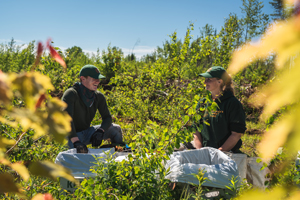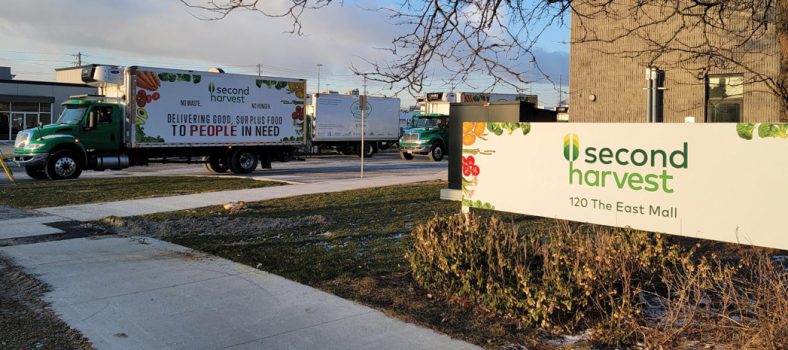Canada Forest Trust, a national ESG company, launches practical solution for those looking to go net zero
By Jeff Todd
Sustainability — it’s a buzz word we’ve all heard a million times.
As the climate crisis worsens, and uncertainty for the future grows, companies have never been more sensitive about doing their part for the environment. And yet, at the same time, the path to true sustainability has never been more murky and confusing.
Gary Zed felt equally confused.
As a tax lawyer and advisor for family offices, corporations and high-net-worth families, he kept hearing first hand a growing desire for ESG solutions, or Environmental, Social Impact and Governance (ESG). But he never knew how to act on it.
How can you connect the dots between a demand to get to net zero emissions, and a clear, tangible solution that creates practical results?
The answer, perhaps unsurprisingly, was found in nature.
For more than 25 years, Zed has maintained a salmon lodge in New Brunswick. While it was always a place of peace for him, he often heard complaints from locals on the devastation of forests.
Then he saw it with his own eyes — vast forests being prematurely cut for lumber and other commercial uses, rather than preserved and nurtured for future generations.
So Zed, now one of the largest landowners in Atlantic Canada, started to connect another set of dots. He began buying both deforested and forested land in the area, simply to manage, preserve and protect it.
“The power of nature, the climate anxiety experienced by our youth, and the demands from consumers and capital markets for businesses to be net zero focused, opened my eyes to something more meaningful,” he explains.
“And frankly, I am an entrepreneur at heart. So it got me thinking: I have seen ESG take off around the world, and the compelling need around climate action. Meanwhile, there is now a necessity that corporations take steps toward a net-zero world. If I am already buying deforested land, and I am going to reforest it, why wouldn’t I get corporations and individuals involved? It kills three birds with one stone.”
That was the moment Canada Forest Trust (CFT) took root.
In plain language? CFT builds forests for clients to help them get to net zero.
CFT, a national company, has spent the last two years building and refining its offering and beta testing its platform. It now has 25 members on the team, built strategic partnerships and attracted leading experts to its boards.
Using the company’s proprietary carbon calculator, companies and individuals determine their impact on the environment and then CFT can guide them to the type and size of the forest they need to build.
From there, according to Zed, it is a five-step process to achieve your goals, beginning with procurement of the land.
Zed recently launched a sister company — Canada’s Land Trust — for farming and forestry families wanting to sell or lease their land for the purpose of reforestation efforts.
“We need to have a portfolio of land available across the country for our customers wanting to participate in forest building exercises to get them to net zero,” Zed says.
Some clients are very focused on economic reconciliation and keen to have meaningful relationships with Indigenous communities. In those cases, partnering with indigenous communities are often crucial to the process, both for their profound generational land knowledge, but also for CFT’s program potential to create meaningful economic opportunities and to provide a way of life and skills development for Indigenous youth wanting to remain on their lands.
“When we meet with Indigenous community leaders, we talk about partnership building, sustainable employment, skills development, education, knowledge sharing, and revenue sharing”, said JP Gladu, a prominent Indigenous leader and former CEO of the Canadian Council for Aboriginal Business, who now serves as the chair of CFT’s Board of Directors, providing a key conduit to Indigenous leaders across the country.
The next step is land preparation, or getting the land ready for its environmental make-over. That includes scarifying the land, performing a species assessment and getting the client up-and-running with their very own private portal on the CFT website, known as your “Smart Forest Intelligence Dashboard”.
This digital platform helps put the “smart” in Smart Forests, according to Zed.
The dashboard provides a myriad of information for clients, such as the location of the forest, its type, its age and a breakdown of the species and biodiversity found there. And most importantly, it offers statistics on your path to net-zero.
With its carbon footprint determined, and the land identified and prepared, it will soon be time for everyone’s favourite step — planting.

After calculating your carbon footprint, Canada Forest Trust administers a five-step process for individuals and companies to build out and protect their forest. | Canada Forest Trust
Although planting tends to get the most attention, Zed points out this step means little without the final two steps — preserving and protecting.
Trees might be in the ground, but CFT must measure, monitor and maintain the forest to ensure the mortality rate is low through professional inspections and management. These results are then reflected in real time on the client’s personalized dashboard and an annual audited report.
“When you come on board, you end up with a forever forest guarantee. Which essentially means, once we build the forest, we will apply proper forest management to ensure the long term health and maximum carbon sequestration,” Zed adds.
Clients need to be real about their respective climate pledge — most are looking out to 2050 and beyond in terms of their goals to be net zero.
The vision, Zed explains, is to create a real, tangible and personal solution all Canadians can feel invested in.
That means a forest for everyone — whether it be for an individual, a small business, a large corporation and even a school. According to Zed, developing partnerships with educational institutions has been another key area of growth for CFT. Students can now raise funds to create and support a forest for their school by selling seedlings. Its growth and preservation can be incorporated into the curriculum through field trips, digital monitoring and volunteerism.
Zed adds that CFT hired several student interns this past summer, and over the coming years, the company has committed $250,000 for student scholarship programs.
The overarching philosophy, he says, is improving the impact, reporting and storytelling around carbon and biodiversity and the important role each of us can make to bring nature to the forefront as a solution.
“Democratizing forests to make them accessible to all Canadians so we can all do our part to get to net zero emissions,” he says.
“Many social impacting investments can be out of sight, so the biggest fear is whether you are truly having a measurable and transparent impact. So, CFT is about an authentic turnkey program, where you can experience forest building in a transparent way.”
 Jeff Todd is Director of Marketing and Communications at The WCPD Foundation. He is also President-Elect and VP of Partnerships for the Association of Fundraising Professionals (AFP) in Ottawa, Chairman of the Board for the Canadian National Institute of the Blind (CNIB) in Eastern Ontario, an advisor to Beneath the Waves and Co-Founder of the Exuma Foundation of Canada.
Jeff Todd is Director of Marketing and Communications at The WCPD Foundation. He is also President-Elect and VP of Partnerships for the Association of Fundraising Professionals (AFP) in Ottawa, Chairman of the Board for the Canadian National Institute of the Blind (CNIB) in Eastern Ontario, an advisor to Beneath the Waves and Co-Founder of the Exuma Foundation of Canada.




